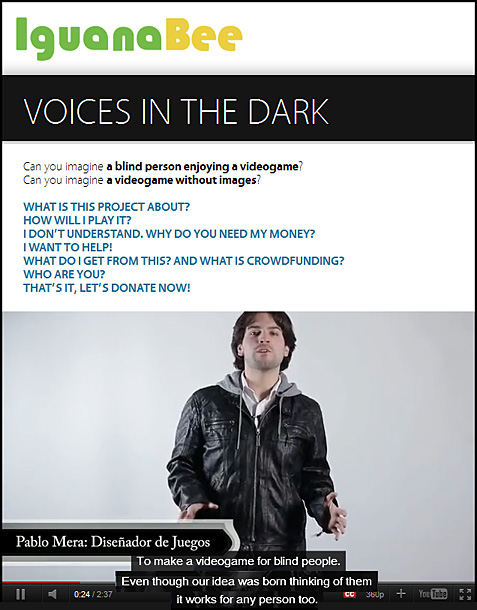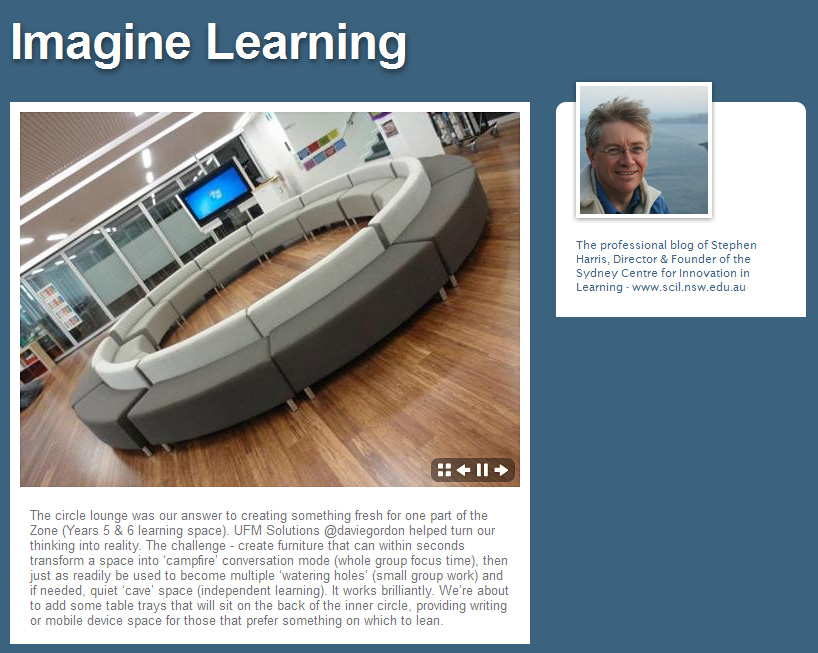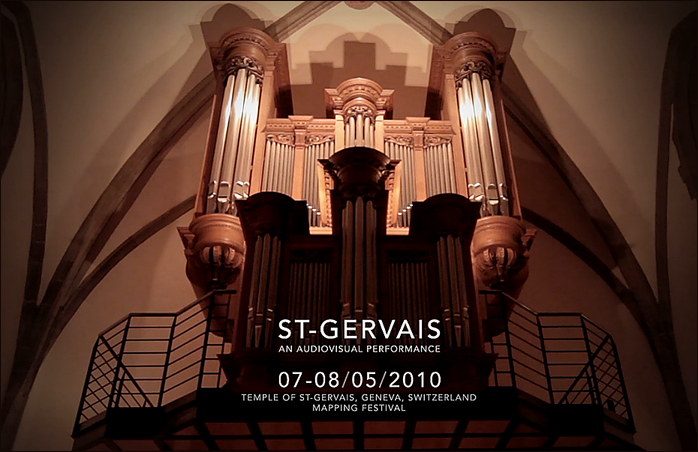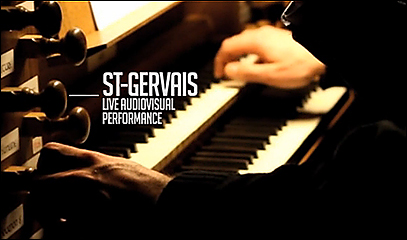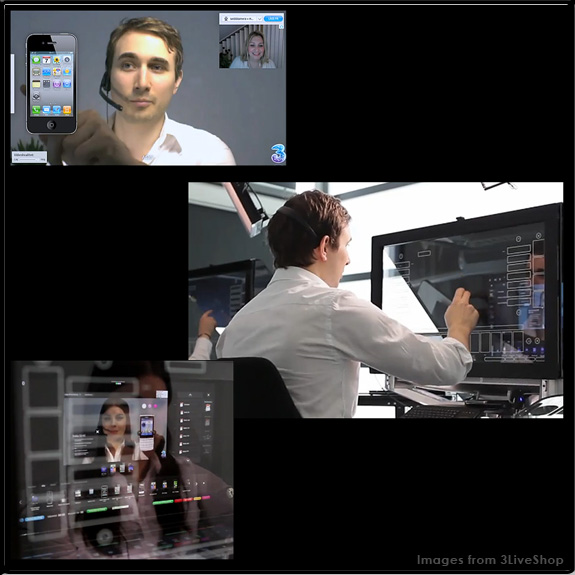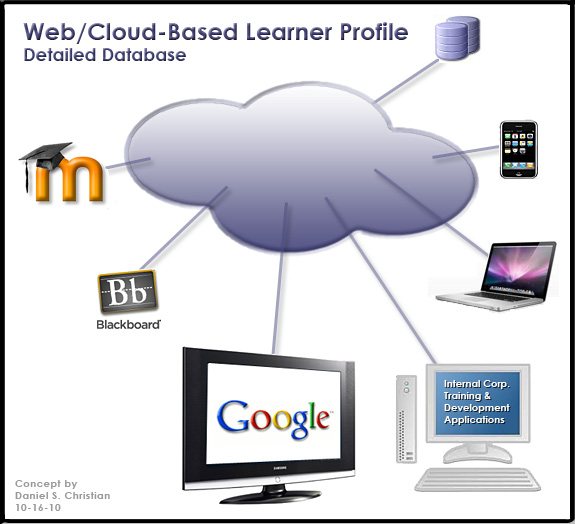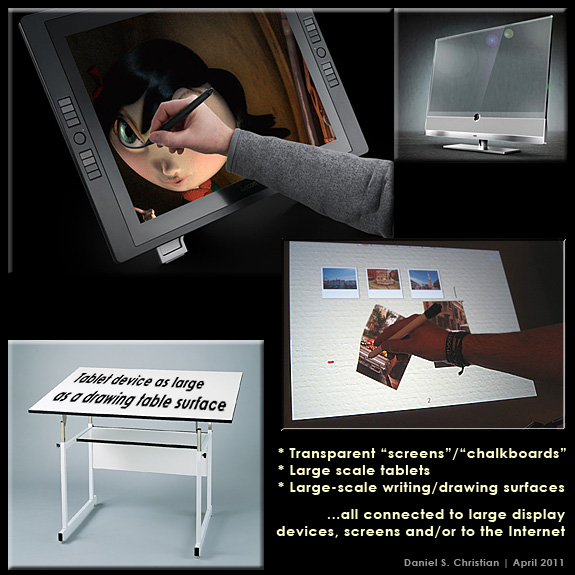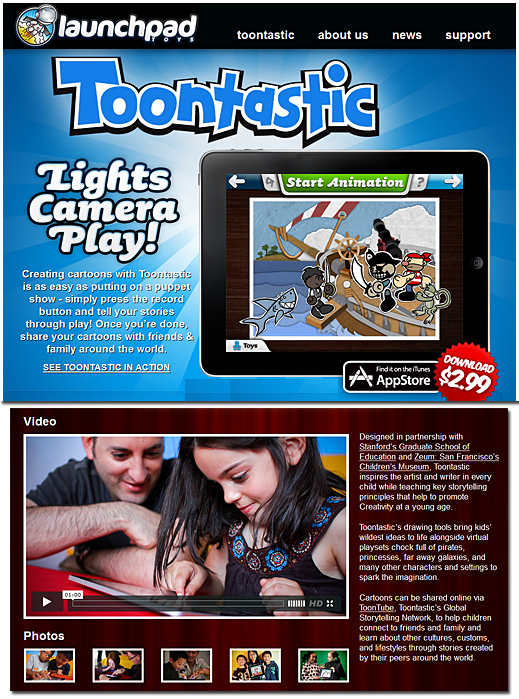The Evolution of Transmedia Storytelling
These videos capture a discussion between Frank Rose, Author of “The Art of Immersion” (and a contributing Editor at Wired) and Jeff Gomez, President and CEO of Starlight Runner Entertainment at Ad Age’s “Creativity and Technology” (CaT) Conference in NYC June 9th, 2011.
- The Evolution of Transmedia Storytelling (Part 1 of 3) (5 min introduction)
- The Evolution of Transmedia Storytelling (Part 2 of 3) (15 min)
- The Evolution of Transmedia Storytelling (Part 3 of 3) (14.5 min)
From DSC:
The incredible potential of location-aware educational materials, which could greatly enable a student to pursue their passions.
The other day, I was talking to my son after he had just finished playing a Wii-based football game. As we were talking, the situation made me reflect upon the power* that could come into play when a game/resource knows your (general) location. For example, in this NFL-based game, the system might ask if my son wants the Detroit Lions involved in the game. If he said yes, then the system might ask if my son were interested in knowing more about the Detroit Lines upcoming schedule. Again, if he answers in the affirmative, the system could provide a link to instantly take him to that information.
Now…take that same concept into the world of education, as a student attempts to pursue her passions, interests, and gifts. If she’s using a device that is teaching her how to draw, the “game” might present a list of art shows and exhibits in her area, along with information on how to get tickets to such events. In this manner, she could feed her passion. Such applications could open up a network of opportunities — in real-time — and present to a student what’s currently happening around them that could further involve them in the very thing that they are working with at that time (be it music, art, math, physics, or whatever discipline that’s involved). This is especially powerful if one were traveling or on a field trip.
Museums and educational institutions could tag their events so that such software goes out looking for such information and would bring such information back to the “game”.
It seems to me that if such technologies uncover chances to further one’s passion, the student will develop more of a love for learning. If a student develops a love for learning, the chances are better that that person will become a lifelong learner.
My bet? Some pretty cool teaching and learning times are ahead…
.
* I realize there are reflections going on in my mind — and others’ minds as well — that such power needs to be taken seriously, responsibly…and not abused from a commercial standpoint nor from a security standpoint. Software may even be needed to absolutely block such inquiries — but if we get to that point, we’ve let the bad apples out there control everything…again.
Game levels and scaffolding–they’re related — from Kaplan EduNeering by Karl Kapp
First of all, be sure to see this one:
Laughology Clip: Origins of the Laughman – MTV, Global, CBC, Good Morning America Test The Laughman
.
First Competitive American Laughing Championship Set for California
What makes a good learning game? Going beyond edutainment — from e-Learning Magazine by Simon Egenfeldt-Nielsen
After developing more than 30 learning games I can safely say that it is definitely not an easy task. Developing good learning games requires constant attention to opposing factors, which only through creativity can truly be made to smoothly work together.
Since the inception of computer games, there has been learning games. In the early years, games were used to demonstrate the potential benefits of computers. Although learning games date back to at least the 1960s, it is still a discipline fraught with challenges [1]. One of the fundamental questions that remain unanswered is: What really makes a good learning game? This simple question is far from trivial as it might be seem upon first sight. The question relates to what we define as a good game and what we define as good learning—none of which have been fully answered.
This article is not be a quick-guide for “how to design” learning games with ideas like points, leveling, power-ups and clear goals. Rather it will present a helicopter view on what often happens when you apply these principles and ignore the fundamental structure of games. You may very well create a learning game that is motivating, and uses level and feedback in some ways, but still fail miserable. This often happens because designers are not conscious of how games are fundamentally structured. They forget games are about “what you do” and not “what you see.” Instructional designers apply game principles but forget to step back and see whether these principles distort the learning experience. Often this happens by failing to integrate game and learning goals, losing sight of the difference between seeing and doing, and accidentally derailing the player away from learning in favor of pure fun. When you use very simple principles from games in your e-learning applications the risk of distortion is less, unlike when designing more complex, game-based learning applications.









